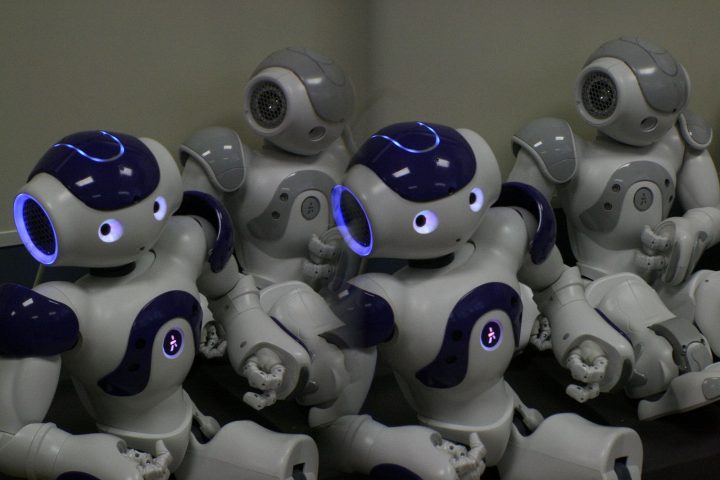By Alex Howlett
If you follow technology, you could be forgiven for believing that humanity is standing the precipice of a robot apocalypse. It’s only a matter of time before automation eliminates so many jobs that humans will simply no longer be “needed.” Right?
Five years back, YouTuber CGP Grey made this case in his popular Humans Need Not Apply video.
Since then, the labor market has not been transforming in the way that Grey had imagined. What gives?
In 2015, MIT economist David Autor published an essay entitled Why Are There Still So Many Jobs? The History and Future of Workplace Automation. According to Autor, what we’re seeing is normal. Despite the fact that technology eliminates some jobs, we should not expect automation to lessen the overall need for human labor.
Clearly, the past two centuries of automation and technological progress have not made human labor obsolete: the employment-to-population ratio rose during the 20th century even as women moved from home to market; and although the unemployment rate fluctuates cyclically, there is no apparent long-run increase.
David Autor | Why Are There Still So Many Jobs?
Autor’s essay is an exploration of why automation doesn’t cause unemployment. He suggests that automation reduces demand for some forms of work while it increases demand for others. Of course, this is always going to be true to some extent. But why should automation destroy and create the same amount of work such that the two effects perfectly offset?
Here’s the rub: Labor-saving technology saves labor. There’s no way around it. Even as automation changes which types of labor we need, it is always going to decrease the total amount we need.
What CGP Grey and David Autor don’t understand is that the level of employment in our economy has less to do with how much human labor we need than with how many jobs we want people to have.
Technology isn’t creating the new jobs. Economic policy is. We use economic policy to replace the jobs that technology eliminates. The new jobs don’t need to be the same as the old jobs. They just need to keep people employed.
Some of the ways we use policy create and protect jobs are obvious, while others are not. In America, we don’t want China to sell us cheap steel. We prefer to use tariffs to force American workers to produce the steel. Central banks use monetary policy to make it easier for otherwise failing zombie companies to borrow money, stay alive, and create jobs. And Looming on the horizon are further job creation measures such as the federal jobs guarantee and the wage subsidy.
We’ve rigged our economy so that people need jobs to “earn” a living. So we make up jobs as an excuse to pay people. In the name of securing people’s incomes, we use economic policy to counteract the labor-saving effects of technology.
It might not feel like such a bad idea to give people good-paying useful work to do. But to the extent that we create jobs to push money to workers, we are not creating those jobs because there’s actually work that needs doing. And as long as we keep this up, we will remain unable to free humanity from the burden of unnecessary work. We are holding ourselves back from reaching our full potential.

Photo by Dorothea Lange | 1937
The way we get people their money is broken. People need the money—that’s true. But they don’t need the jobs.
The labor market is a market for getting people to do things. It’s not supposed to be a tool for funneling money to consumers. In an efficient labor market, jobs only exist because there’s work that needs doing. And the only purpose of wages is to provide an incentive for people to do that work.
So, if people need money and jobs are a crappy way to get it to them, why not just hand them the money instead? That’s exactly what basic income does. If you’ve been following this blog—or not living under a rock—you know that basic income—also known as universal basic income or UBI—is a regular income unconditionally paid to every individual person. Basic income is money independent of the labor market.
The prospect of handing everyone free money might sound ridiculous at first. But it starts to sound a lot less ridiculous when you compare it to the status quo. And the status quo, as I said, is that we force people to do useless work as an excuse to pay them. We are already handing people money. We’re just hiding it behind the fact that we’re also handing them jobs.
Basic income is often touted as the answer to robots taking over human labor. There is a kernel of truth to this story, but reality turns out not to be so simple. That’s because the robots are not coming for our jobs. Our society has gotten really good at generating make-work. It’s baked into our culture and into our laws.
In August of last year, Boston Basic Income discussed the issue of technological unemployment.
Instead of technological unemployment, we have people doing useless work. To make matters worse, there’s plenty of useful work that’s not being done. We should pay to have it done. Let’s create jobs for the right reasons. Providing workers with money is not one of them.
Let’s also recognize the cost of jobs. Any time we pay people to work, they do that work instead of what they would otherwise do. Jobs are worth it only when the benefit we get from the product of the labor outweighs the benefit we would have gotten from letting people spend their time how they choose.
Basic income is not a response to some looming robot takeover. It’s the other way around. By providing people money independent of the labor market, we won’t have to feel guilty anymore about letting robots do the work that we don’t want to do anyway.
The robots are not coming and that’s a problem. Let’s stop wasting people’s time and let the robots do the work.
People need money, not jobs.










